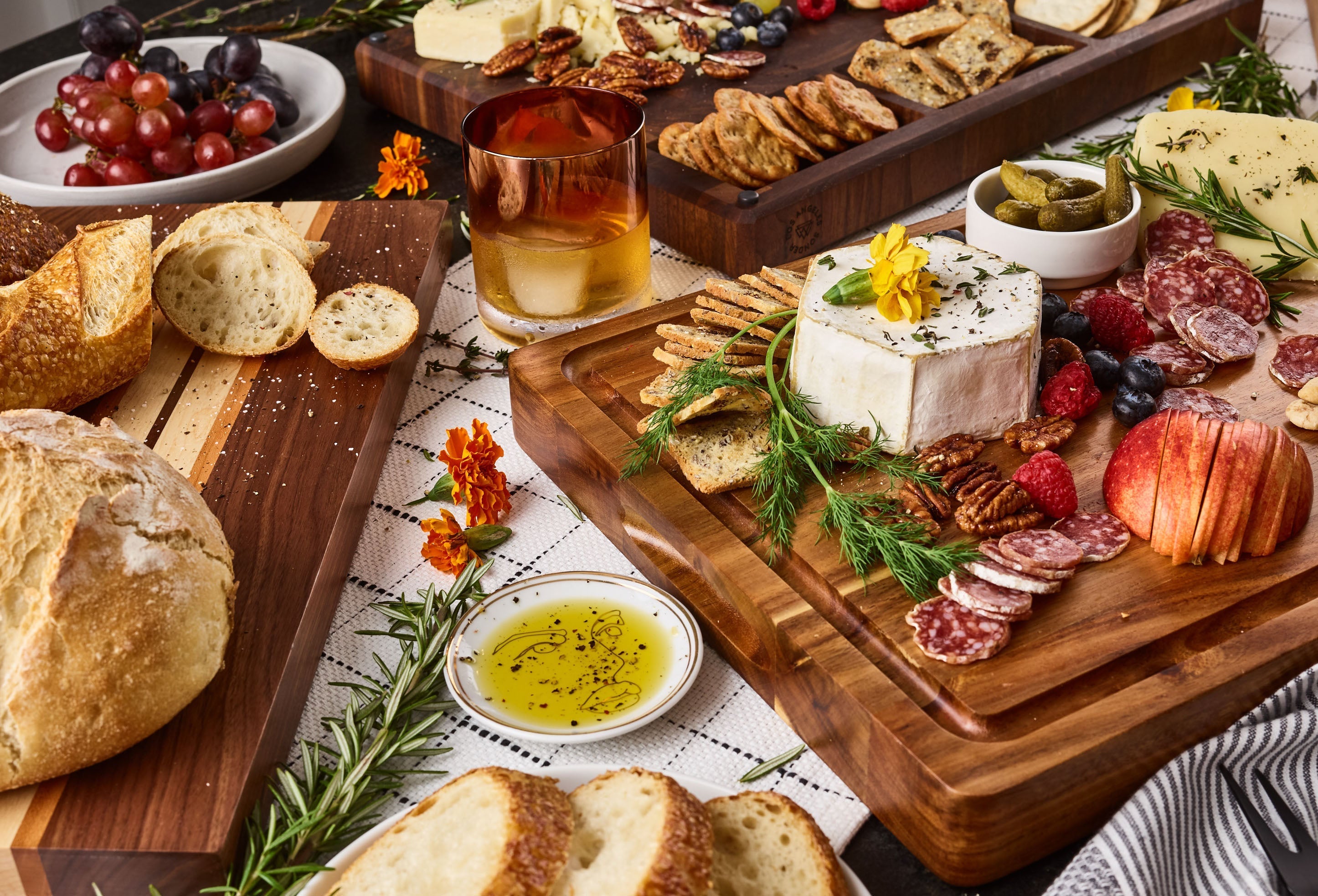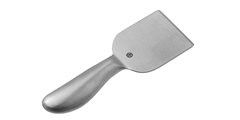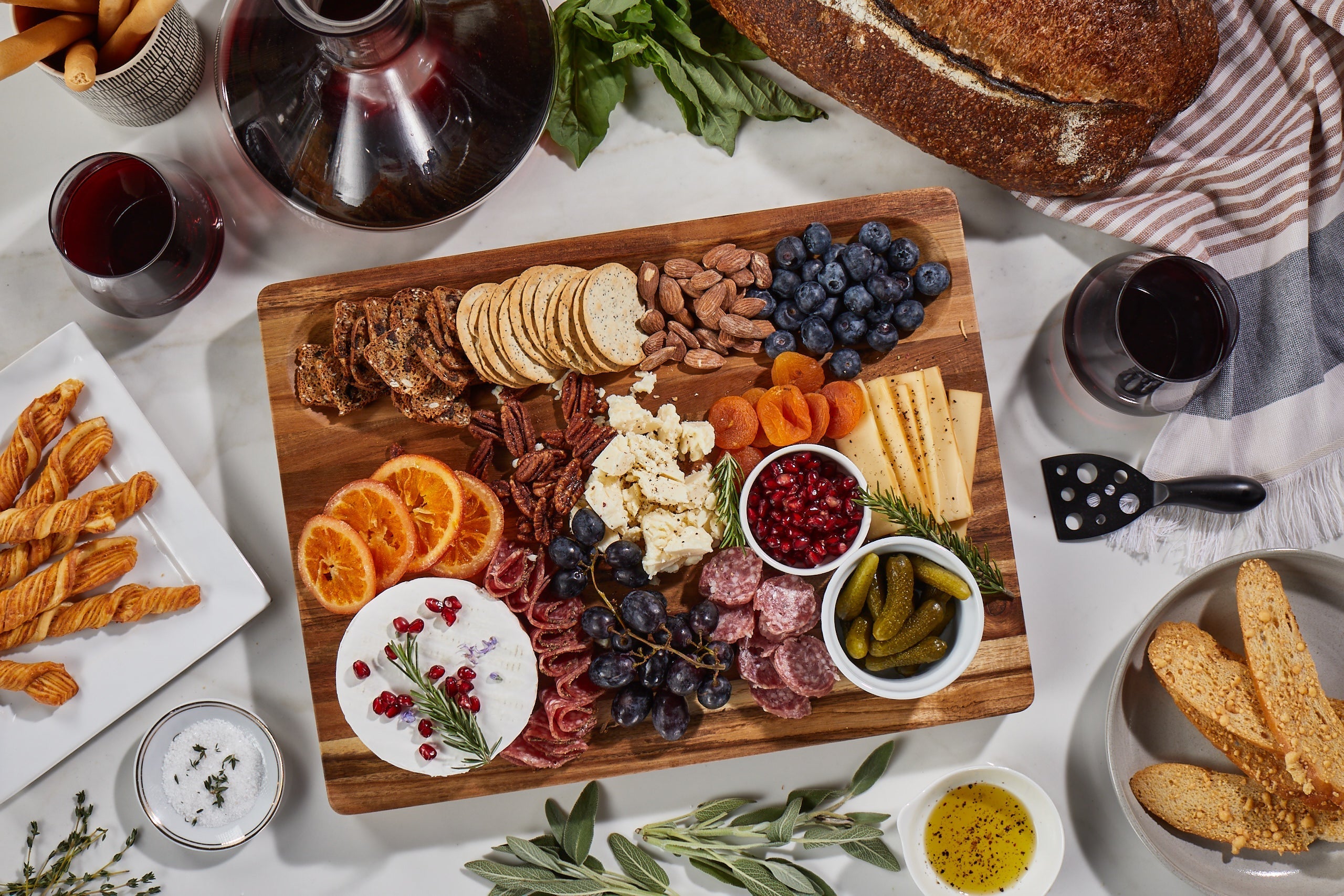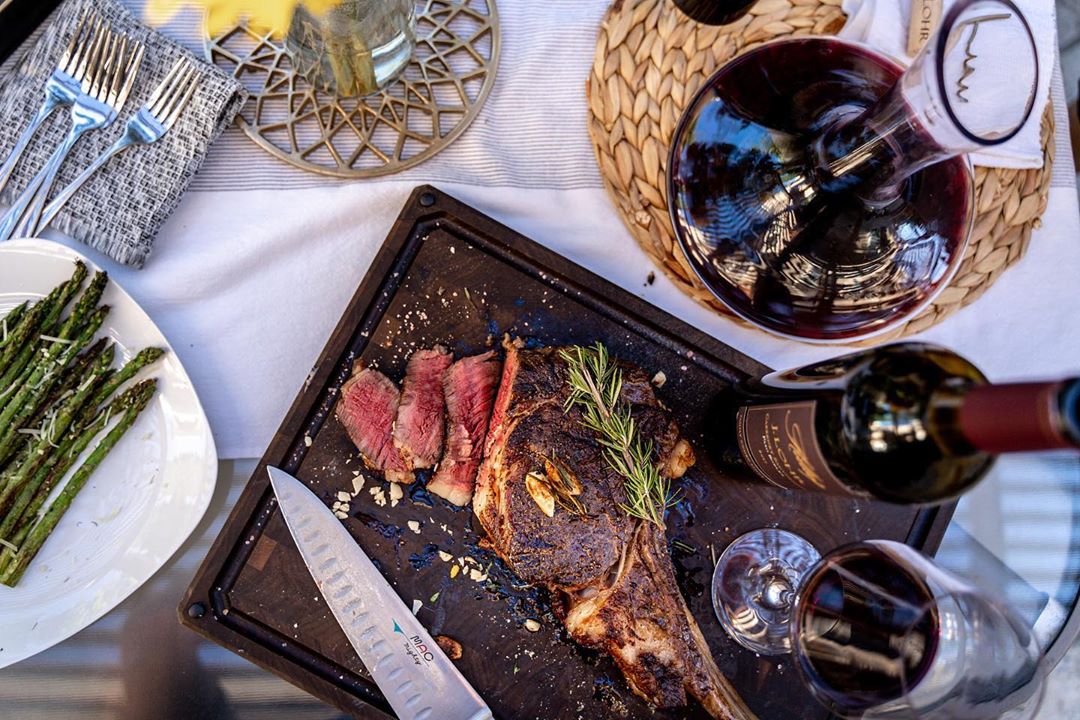
Foray in du Fromage: Types of Cheese Knives and How to Use Them
Have you ever received a mysterious assortment of tiny cutlery as a housewarming or wedding gift and wondered what on earth you’re meant to do with it? That is most likely a nice set of cheese knives, perfectly curated for all your cheese carving needs! Either that or your brother in law got hoodwinked by a salesman at Saks and you’re now the proud owner of a tiny set of lobster forks...buut let’s say, for the sake of this article, that it’s cheese knives.
Now, we’re no kaiser of käse, but we know a thing or two about charcuterie boards and, in our humble opinion, no board is complete without the addition of at least 1-2 kinds of delicious cheese. With all the different types and textures of cheese out there, there’s no “one size fits all” when it comes to cheese knives. As a result, there are several standard types that are every bit as specialized as the substance they’re designed to cut.
It can be confusing at first, but once we break it down by category, you’ll be a cheese whiz in no time. So without further ado, let’s take a foray in du fromage knives, or, in the wise and immortal words of the Hunchback of Notre Dame, let’s pour the wine and cut the cheese!
Knives for Soft Cheeses
Name: Soft Cheese Knife
Alias: Open Work Blade Knife
Characteristics: Holes in the blade; may have prongs at the tip, but not always.
Behind the Design: The holes reduce the surface area of the blade so that soft cheeses don’t stick to it.
Best for: Brie, Camembert, fresh Mozzarella, Chèvre, Feta, or Gorgonzola.

Name: Spatula Cheese Knife
Alias: Cheese Spreader Knife
Characteristics: Thin flexible blade with no sharp or serrated edges
Behind the Design: The flat smooth blade makes spreading soft cheeses onto crackers or baguettes a dream
Best for: Boursin, Cream Cheese, Robiola, Ricotta, Brie, or Camembert.

Knives for Semi-Soft to Semi-Hard Cheeses
Name: Pronged Cheese Knife
Alias: Fork Tipped Spear Knife
Characteristics: Medium thick blade with one sharp edge and a distinctive upward turned pronged tip
Behind the Design: The blade is thick enough to cut semi-hard cheeses, but not quite thin enough to glide through soft cheeses. Its forked tip is great for spearing and serving pieces of cheese, which is especially handy on a charcuterie board.
Best for: Muenster, Havarti, Fontina, Monterey Jack, Pepper Jack, Vermont Cheddar, Raclette, and Taleggio

Knives for Hard Cheeses
Name: Flat Cheese Knife
Alias: Cheese Chisel
Characteristics: Short flat blade with one sharp edge
Behind the Design: This knife is taller than it is long, so you can apply more direct pressure with ease to shave or chisel away pieces of hard cheese
Best for: Aged cheese like Gouda, Cheddar, Mimolette, Emmental, and Gruyère.

Name: Parmesan Knife
Aliases: Almond Knife, Spade Knife
Characteristics: Tear shaped blade
Behind the Design: The sharp tip is designed to cut into hard grainy cheeses or rinds with ease
Best for: Parmesan, Asiago, Manchego, Grana Padano, Pecorino Romano, Comté, or Gruyère


